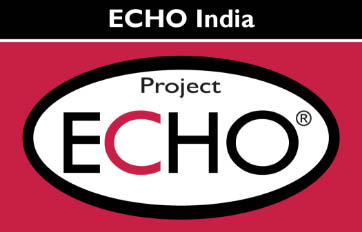Rethinking How We Think
Computational Thinking (CT) is often misunderstood as something limited to coding or computer science. In reality, it is a way of thinking—a problem-solving mindset inspired by how computers process information but applied to human learning and decision-making. CT involves four core processes:
• Decomposition: breaking down complex problems into smaller, manageable parts.
• Pattern Recognition: identifying similarities, trends, and relationships.
• Abstraction: filtering out unnecessary details to focus on what matters.
• Algorithmic Thinking: creating step-by-step strategies to solve problems.
When schools adopt CT, the impact is transformative. Teachers gain new tools to organize curriculum more effectively, and students develop confidence to analyze, reason, and solve problems independently. The result is an education that blends logic with creativity and prepares learners for the complexities of life—not just exams.
CT in Action: From Theory to Practice
Decomposition in Lesson Planning
For many teachers, CT began with rethinking how lessons are structured. Ms. Reshma, a participant in the CSpathshala ECHO Program, explained how she shifted from unstructured teaching to systematically designed lessons. By breaking concepts into smaller steps, she noticed that students grasped ideas more quickly and required less repetition. This is decomposition in action—simplifying the complex into teachable parts.
Pattern Recognition and Creativity
At Shrimati High School, teacher Yogesh Kauthankar experimented with blending creativity and logic. While teaching states of matter, he used coconut leaves and weaving methods, helping students recognize familiar patterns in an unfamiliar concept. One student who had previously found science boring became curious and engaged. Even visually impaired students could recognize solids, liquids, and gases through touch. Pattern recognition allowed all learners to connect the known with the new.
Abstraction for Inclusive Learning
Abstraction helps students and teachers focus on the essence of a concept without being overwhelmed by detail. In Yogesh’s example, students weren’t asked to memorize definitions; instead, they engaged with the essential properties of matter through sensory experiences. By filtering out unnecessary detail, learning became more accessible, especially for students with special needs.
Algorithmic Thinking Beyond the Classroom
CT also proved valuable outside the textbook. Government Primary School teacher Arati Kolambkar used algorithmic thinking to plan a large school gathering. She sequenced tasks, collected data, assigned responsibilities, managed logistics, and coordinated prizes. The event’s success showed that algorithmic thinking is not just a classroom strategy but a life skill.
The CSpathshala ECHO Program: A Collaborative Platform
The CSpathshala ECHO Program introduced teachers to CT not as abstract theory but as a shared practice. Using the ECHO model, it connected educators, researchers, and trainers in regular sessions where they could learn, experiment, and reflect together.
For many teachers, this was their first experience of presenting their ideas formally. Guided step by step, they learned how to design CT-based curricula, write abstracts, and present at conferences. Yogesh’s journey from a regional event in Goa to the national conference in Pune is a testament to how structured mentorship can transform teachers into reflective practitioners.
As trainer Saieesh Gandhi observed, ECHO’s strength lay in creating informal yet consistent interactions with experts, without pulling teachers away from their schools. This community of practice kept teachers motivated and made research and innovation feel achievable.
From Theory to Practice
The shift was unmistakable. Classrooms moved away from rote memorization toward hands-on exploration, where students analyze, question, and discover. Teachers found that when they applied computational thinking, lessons became clearer, and learning became more meaningful. What was once confined to theory and memorization became applied, logical, and engaging.
Volunteer Sonia Garcha captured it well: “Because it was so structured, all the teachers knew they were working toward the targets that were set. There was no drifting.” Structure and creativity came together through CT, enabling what used to be abstract to become tangible.
Conclusion: A Mindset for the Future
Computational Thinking is not confined to computers—it is a mindset that equips learners to face complexity with clarity. Through decomposition, pattern recognition, abstraction, and algorithmic thinking, teachers and students in the CSpathshala ECHO Program discovered new ways to teach, learn, and even organize life beyond classrooms.
By blending creativity with logic, CT is transforming education in India. It empowers teachers to design purposeful lessons, inspires students to think independently, and prepares schools to nurture problem-solvers for the future. More than a skill, CT is a way of thinking that is reshaping how education unfolds—one step, one pattern, one solution at a time.
